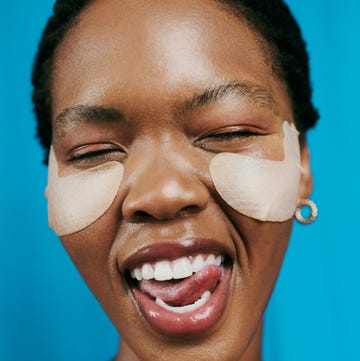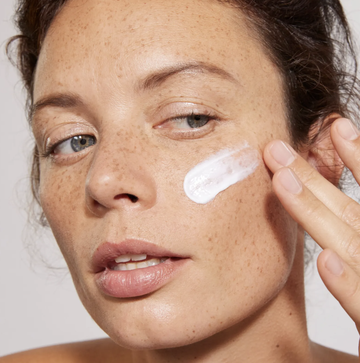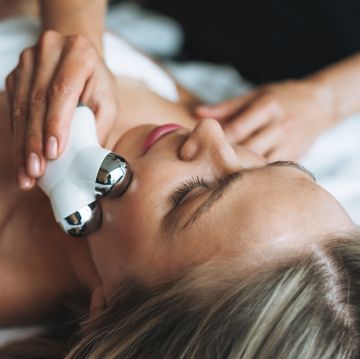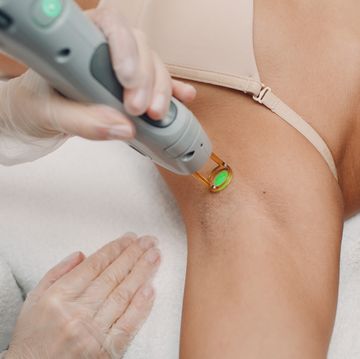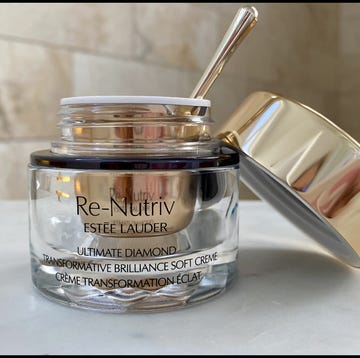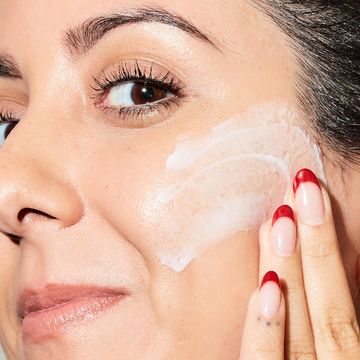Liposuction and a winning ticket from the genetic lottery may no longer be required for a sculpted, supermodel jawline. The FDA recently announced its approval of Kybella, a non-surgical injectable treatment for chin and neck fat that uses deoxycholic acid, a molecule that breaks down dietary fat in our bodies, and can be done at the dermatologist's office on lunch break. We asked Dr. Macrene Alexiades-Armenakas, who was an investigator on the FDA trial for Kybella, all about the new wonder drug.
Harper's Bazaar: How excited are you about Kybella? Do you consider it to be the next big thing?
Dr. Macrene: I think it's interesting. I've been in the industry long enough that I have come to realize that everything is a step. Only in retrospect do people look at something and think, 'Wow that was a breakthrough,' like Botox was. But there were so many years when Botox was being used in the '70s for cerebral palsy and spastic clonus and it went relatively unnoticed. And even after it was launched for cosmetics, only in retrospect can we acknowledge that it was a blockbuster. This is an important step forward because it's the first injectable to address fat and I think that's very significant. Whether or not this product ends up being the be-all-end-all, it opens the floodgates to a whole new generation of products.
HB: When will people actually be able to get it done at their derm's office?
Dr. Macrene: Soon. Thus far, our office is going to be one of the first in New York City to have it. It's a controlled launch, where the investigators like myself will be the first to access the product and provide it to clients, and then after a while, they'll slowly train additional physicians to use it. We anticipate having it in the next few weeks, as early as June.
HB: Who is a good candidate for Kybella?
Dr. Macrene: This where being involved in the trial is very helpful—I had people ranging from very mild submental fat to people who are truly obese and didn't have a neck, where the chin was basically attached to the chest. It's indicated for moderate to severe convexity, but the people who got the best results were moderate because the number of injections was more reasonable. With the severe, it was anywhere from one to six injection sessions and the ones who were really obese got all six. And they improved, but it wasn't as obvious. For the moderate, in as few as three treatments, they had no double chin left.
HB: How far apart do you space the treatments?
Dr. Macrene: One month apart.
HB: How do you tell if you're moderate? I think we all feel like we have a little double chin...
Dr. Macrene: I mean, if you look in the mirror and as long as you have a pooch that sticks out—it has to be that the fat rolls outward and doesn't shape inward to the neck. It has to be convex, not concave.
HB: What is the recovery and downtime like?
Dr. Macrene: Right after I inject, it's red and a little bit hot. For a few days, it can feel like there's fluid in there. It's something you would sense, but it's not necessarily something anyone else would see. And it absorbs over the next few days. Bruising is something you might see when you inject with a needle, so that's just something to keep in mind. I did see redness, but overall, it's pretty much a no-downtime procedure.
HB: What are the scary side effects to know? Is there any risk of muscle freezing?
Dr. Macrene: This actually melts the fat, so it doesn't affect nerves or muscles. There really isn't anything to be worried about—the safety is excellent.
HB: Will you be able to use Kybella on other parts of the body?
Dr. Macrene: I asked them that, but unfortunately right now it's only indicated for the submental fat which is really just the neck. It hasn't yet been studied for other areas of the body.
HB: What are the other available options for getting rid of a double chin at the derm's office?
Dr. Macrene: The VelaShape III is phenomenal—it uses vacuum suction, radio frequency and red wavelengths to melt fat and tighten tissue and I've gotten very significant improvement after a single treatment for people who are moderate to severe. There are other devices, too, for the neck: The vShape, I'm known for the Profound, which is needle-based technology, and I get great results with the Genesis laser. I published a paper using the ProLipo Plus laser-assisted liposuction and it carries a lot more side affects and risks—it's a sterile set-up, very time-consuming. It's better than doing a neck lift surgically but Kybella is even better: A simple, quick injection you can do on your lunch break.
HB: How expensive will Kybella be?
Dr. Macrene: They haven't set the prices yet, but I think it is going to be pretty pricey. I suspect they are going to price it competitively with things like Botox, fillers and lasers.
HB: Is it covered by insurance?
Dr. Macrene: No, people hear that it's an FDA-approved drug and they think it's covered, but this will not be.



